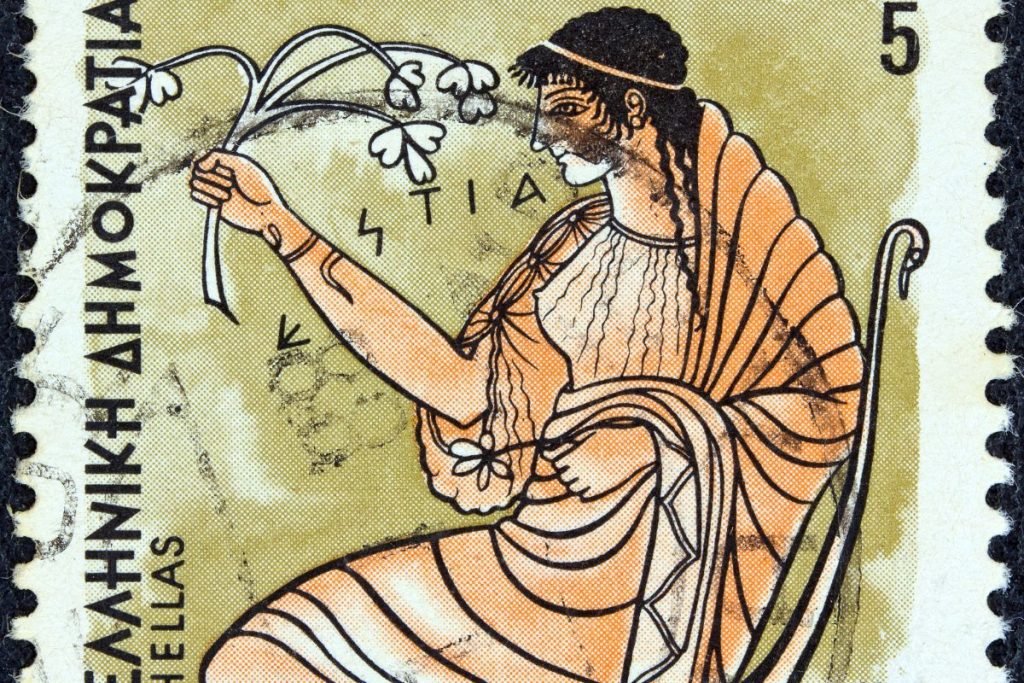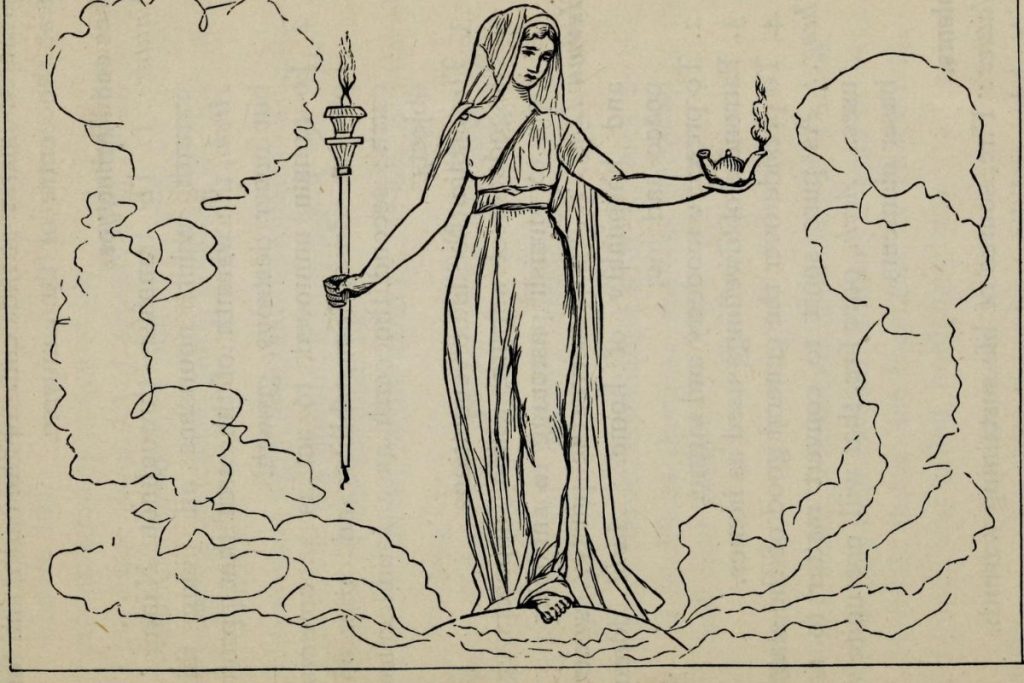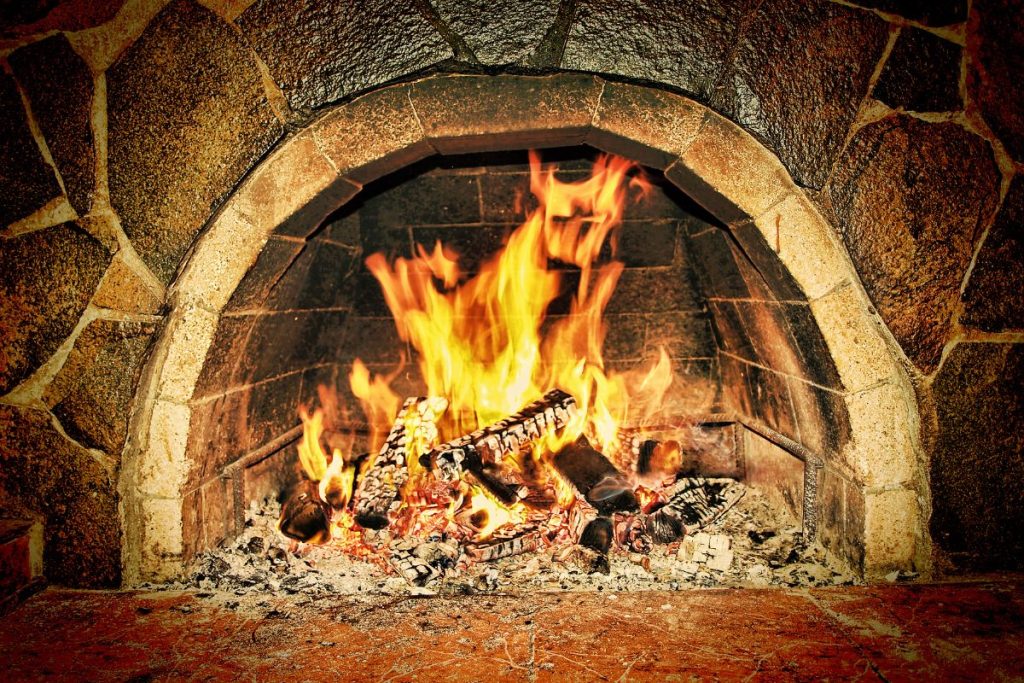The Hestia symbol is based on the Greek goddess Hestia, and it symbolizes family, society, and also shows authority.
Hestia is the Greek goddess of the hearth, also known as the virgin goddess. In Roman mythology, she is known as the Goddess Vesta and is the protector of family and home.
Unlike other Greek gods and goddesses, Hestia was not actively involved in wars and conflicts, making her less popular. Hestia holds a crucial role in ancient Greek culture and religion.
Hestia Symbol in Greek Mythology
As one of the central Goddesses of Greek religion, Hestia’s position in Greek mythology is undeniably superior.
Worship Symbols
- The Hearth Fire: The hearth fire symbolizes family or domestic life and society.
- The Kettle: The kettle is another important symbol of Goddess Hestia. It represents home, cooking, meals, etc.

Hestia’s Role in Greek Mythology
Hestia was the firstborn of Kronos (Cronus) and Rhea. However, Kronos had swallowed all of his children, including Hestia, because of a prophecy that said one of his children would be the reason for his death.
Origin Story
Apart from Hestia, Kronos swallowed: Demeter, Chiron, Hades, Hera, and Poseidon. Kronos couldn’t swallow Zeus because Rhea hid him from her husband.
Later Zeus returned and freed all of his siblings and fulfilled the prophecy. Since Hestia was the firstborn and first one to be swallowed, she was the last to be removed.
But apart from being the sister of Zeus, Hestia has an important role among the Greek gods.
Worship and Honor of Hestia
Hestia translates to fireplace, altar, or hearth.
Other Symbolism
- Family
- Home
- State
- Well-being
Civic Affairs
Hestia’s role was also related to civil affairs. Every Greek Prytaneum had a large hearth dedicated to Hestia in ancient Greece.
Every time after the discovery of a new country, town, or state, fire from Hestia’s official hearth was carried to light the new hearth.
Sacrificial Flames
Hestia was also the goddess of sacrificial flames. Greeks set aside the first offering of any sacrifice first to Hestia.
Hestia received the first offerings even for the sacrifices made for other gods. The Greeks had a saying, “to begin from Hestia,” when making a sacrifice.
Chastity Symbolism
Another reason Hestia was respected and worshipped was that she was the virgin goddess. She vowed eternal chastity like goddesses Athena and Artemis, opposite Aphrodite, the goddess of love.
Even though Apollo and Poseidon tried to marry her, she remained chaste. The three Greek goddesses, Hestia, Athena, and Artemis, were famous as the three virgin goddesses. (Athena and Artemis were thought to be impossible to melt with romantic love.)
Protection of Hestia
Respecting Hestia’s decision to remain chaste all her life, other gods always tried to protect her when anyone threatened her position.
Priapus, the Greek god of fertility, male genitalia, and fruits, tried to rape Hestia while she was sleeping. But, her faith saved her from his violent attempt as well.
Royal Hearth at Mount Olympus
Zeus positioned Hestia as the Royal Hearth, which was believed to be the highest position any god could have on Mount Olympus.
Her position was even above Hera and Athena, and Hestia was often called the Chief of all Goddesses.

Portrayal of Hestia
Hestia was the least-portrayed goddess of the twelve Olympians. She kept herself detached from conflicts and took no part in the drama of the Olympian gods or in human wars.
This is why she was the least-mentioned god in ancient Greek tragedies and other epics. However, the rare portraits of her are depicted in the most modest manner.
She wore simple clothes with a veil on her head and always held a staff or fire. Also, unlike other Greek gods and goddesses, she didn’t have a dazzling throne.
Hestia kept a simple wooden throne for herself, which is more than enough to speak of her modesty.

Worship and Rituals Around Hestia
As previously mentioned, Hestia was also the goddess of sacrifice. She received the best portion of every sacrifice every household in Ancient Greece made.
The Hearth’s Importance in Greek Like
The hearth played the most crucial role in Greek life. It was the place where they cooked and used it for heating.
The fireside was the central part of the house around which people worshipped and made sacrifices. And the hearth or the fireplace is one of the main symbols of Hestia.
The Goddess of Family Life
Because Hestia was the goddess of family or domestic life, she looked after the well-being of every household. This is why families always offered her the first portion of their sacrifice.
It’s believed that Hestia paid special attention to domestic pigs or calves. This is why Hestia was sometimes associated with the symbols of baby cows and pigs.
Hestia’s Legacy in Greek Culture
All famous and ancient temples in Greece, such as the Mycenae, and the Delphi, have the hearth installed to offer prayers to Hestia.
She was believed to be the medium of communication between the Greek gods and the people, which is why people always remembered her in their prayers.
Hestia’s position is irreplaceable as a goddess who looks after all domestic spaces.
If you’ve enjoyed this article, check out our post on the meaning of the Wicca symbol.

